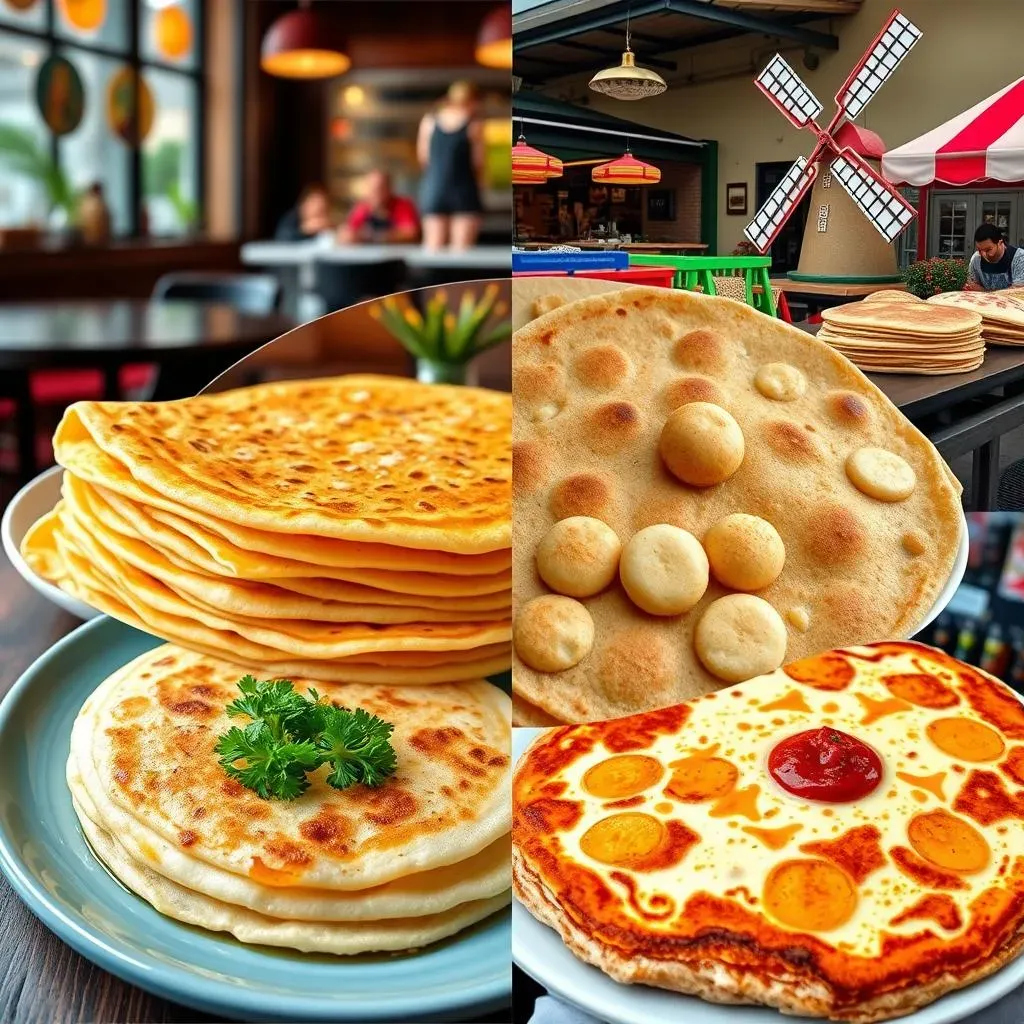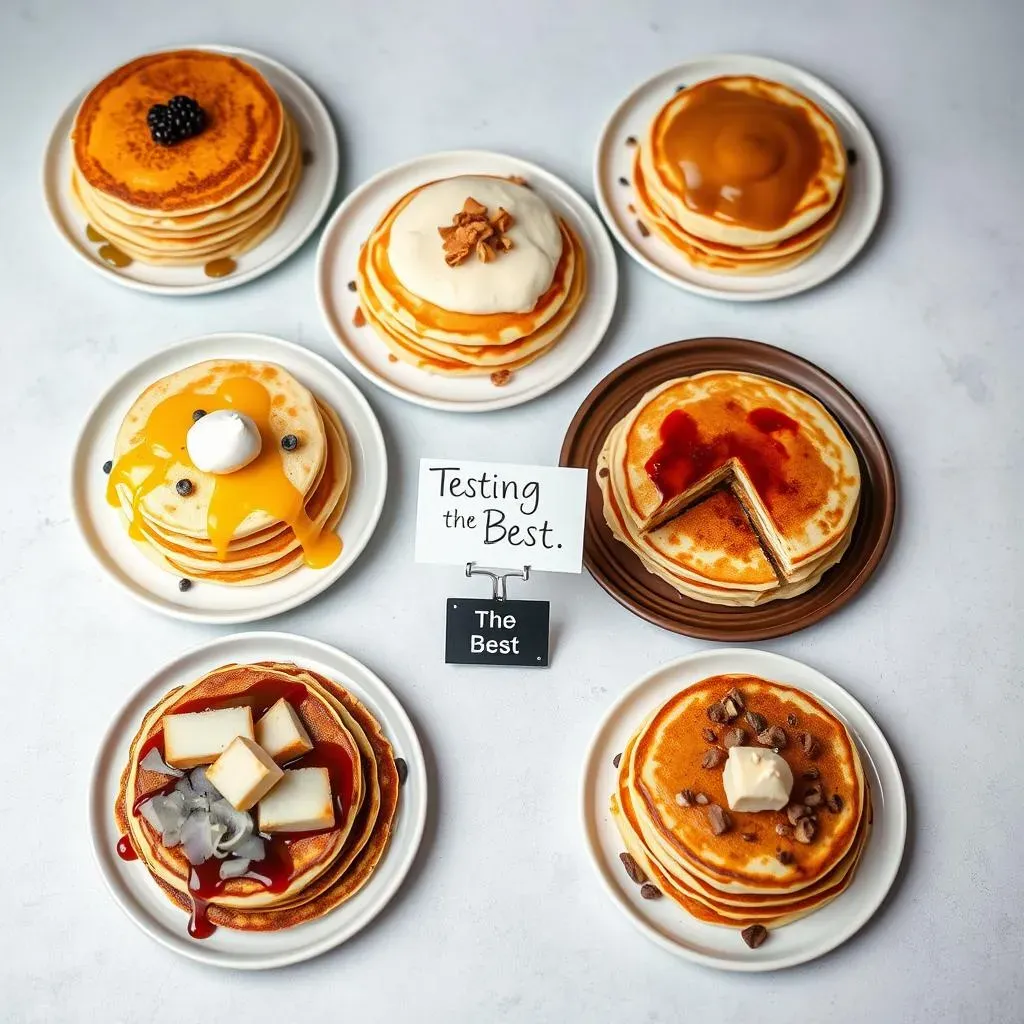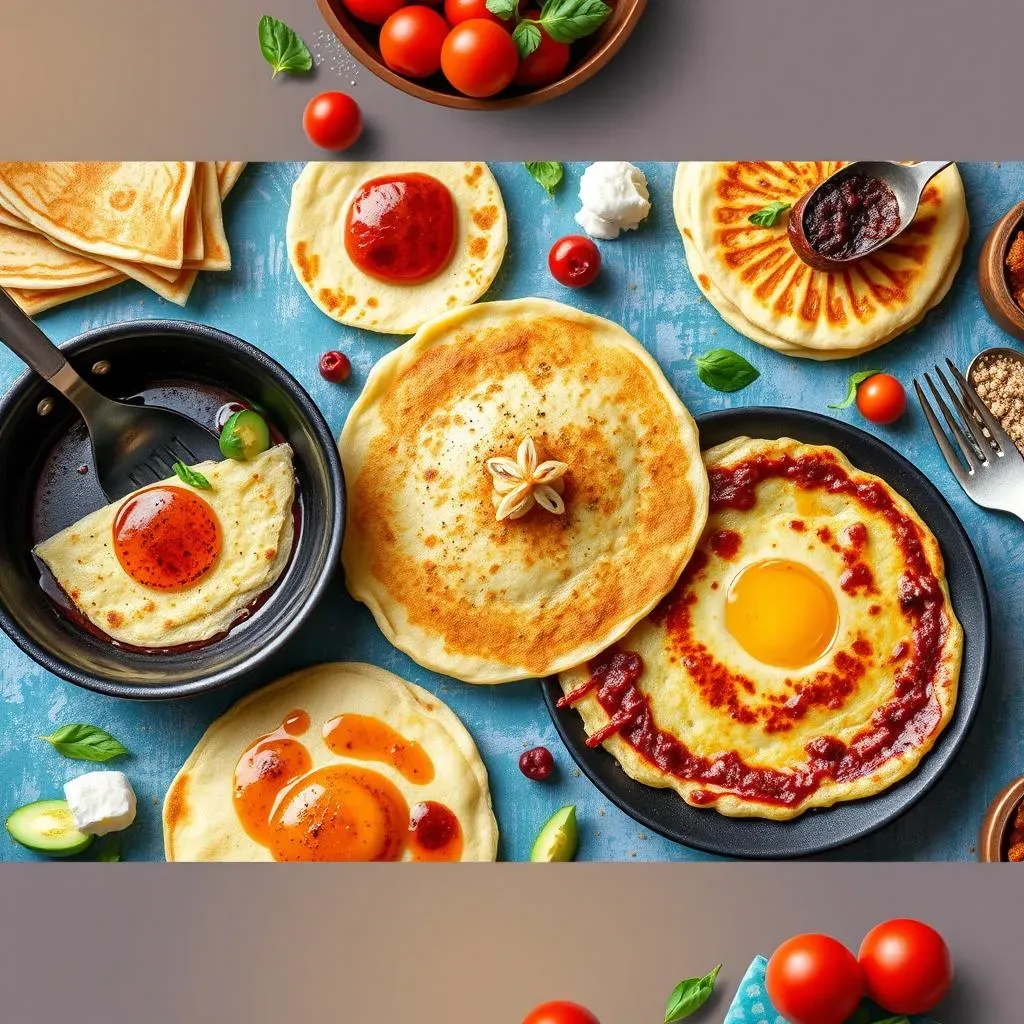Table of Contents
Pancakes, those delightful discs of deliciousness, are a breakfast staple around the globe, but have you ever wondered how they differ from country to country? Forget the same old stack; we're taking a culinary trip, exploring the amazing variety of international pancake recipes. This isn't just about finding a new breakfast; it's about uncovering the unique flavors and traditions that each culture brings to the griddle. We've gathered a collection of recipes from all corners of the world, from the paper-thin crepes of France to the hearty, thick stacks of America, and put them to the test. We'll dive into what makes each recipe special, sharing our honest opinions and easy-to-follow tips. This article serves as your guide to the world of pancakes, helping you discover your next favorite breakfast and maybe inspire your next culinary adventure. Get ready, because we're about to embark on an "international pancake recipes comparison" that’ll change your breakfast game forever.
A World of Pancakes: Exploring International Recipes

A World of Pancakes: Exploring International Recipes
The Global Pancake Family
Alright, let's talk pancakes, but not just any pancakes. I'm talking about a globe-trotting adventure on a plate! Forget those fluffy, American-style stacks for a second. The world of pancakes is wild, my friend, totally wild. Each country has its own take, its own little twist, and it's absolutely fascinating. Think about it: you've got paper-thin crepes in France, almost like a delicate lace, and then you jump over to Ethiopia and get these spongy, slightly sour injera. It's like they're all cousins, but each one has its own unique personality.
And that’s just scratching the surface. You’ve got the Dutch with their poffertjes, tiny little puffs of goodness, and the Japanese with their okonomiyaki, which are savory and more like a pancake-omelet hybrid. It’s a pancake party, and everyone’s invited! It's not just about breakfast, either. Some pancakes are street food, some are for special occasions, and some are just everyday comfort food. The sheer variety is enough to make your head spin, in a good way, of course.
Pancake Type | Country | Description |
|---|---|---|
Crepes | France | Thin, delicate pancakes, often served with sweet or savory fillings. |
Injera | Ethiopia | Spongy, slightly sour flatbread made from teff flour. |
Poffertjes | Netherlands | Small, puffy pancakes, typically served with butter and powdered sugar. |
Okonomiyaki | Japan | Savory pancake/omelet made with a variety of ingredients. |
More Than Just Breakfast
It really makes you think, doesn’t it? Pancakes aren’t just a simple recipe; they're a reflection of a culture’s history and what ingredients are readily available. The ingredients, the cooking techniques, the way they're served, it all tells a story. For example, the French use buckwheat flour in some of their galettes, because it grows well there. And the use of rice flour in some Asian pancakes makes sense when you think about the crops they grow. It's like a delicious history lesson, one bite at a time.
It's also about how we eat them. In some places, it's a casual affair, just grab and go. In others, it's a sit-down, family-style celebration. I love that pancakes can be so versatile, adapting to the needs and tastes of each place. It just goes to show that something as simple as a pancake can be so much more than just a pancake. It's a universal language, spoken with a spatula and a smile.
Testing the Best: Our International Pancake Recipe Comparison

Testing the Best: Our International Pancake Recipe Comparison
Okay, so we've drooled over the global pancake family, but now it's time to get down to business. I'm talking about a taste test, a pancake showdown, a battle of the batters! We didn't just want to talk about these amazing international pancakes; we wanted to *make* them. So, we picked a few standout recipes – the ones that really caught our eye – and got to work in the kitchen. It was like a United Nations of pancake ingredients, with flours, spices, and techniques from all over the map. We weren't messing around either; we wanted a fair fight, a true test of pancake greatness.
We gathered a crew of eager eaters, a mix of pancake aficionados and casual breakfast lovers, and set up a proper blind taste test. Each pancake was cooked up with love (and maybe a little bit of flour everywhere), then sliced into samples. Our testers ranked each one based on flavor, texture, and overall deliciousness. It was serious business, but also a lot of fun. Let me tell you, there were some surprising results and some clear favorites that emerged. It's not always about the fanciest ingredients or the most complicated techniques; sometimes, it's the simple things done really well that make a pancake shine.
Criteria | Description |
|---|---|
Flavor | How tasty is the pancake? Does it have a unique flavor profile? |
Texture | Is it fluffy, crispy, chewy, or something else? How does it feel in your mouth? |
Overall Deliciousness | How much did the testers enjoy the pancake? Would they eat it again? |
Global Flavors: Results from Our Pancake Taste Test

Global Flavors: Results from Our Pancake Taste Test
Alright, the moment we've all been waiting for: the results! After all that flipping and tasting, we've got some clear winners (and some that were, well, interesting). First up, the French crepes. They were a hit, no surprise there. The delicate texture and the way they soak up fillings made them a crowd-pleaser. Our testers loved the versatility, going from sweet with berries and cream to savory with ham and cheese. Then, on the other end of the spectrum, the Ethiopian injera sparked a lot of conversation. It’s not your typical pancake; the spongy texture and slightly sour flavor were definitely unique. Some people loved it, others weren’t so sure, but everyone agreed it was an experience.
The Dutch poffertjes were absolutely adorable and a total joy to eat. Those tiny, puffy pancakes were like little clouds of goodness, and they vanished in seconds. And lastly, the Japanese okonomiyaki was a surprise for many. It’s so different from what people typically think of as a pancake. The mix of savory ingredients and the way it’s cooked made it a hearty and satisfying meal. It wasn’t a clear-cut winner, but it definitely left a lasting impression. Overall, it’s clear that the "best" pancake really depends on what you're in the mood for.
Pancake Type | Overall Rating | Notes |
|---|---|---|
French Crepes | High | Versatile, delicate, great with sweet or savory fillings |
Ethiopian Injera | Mixed | Unique flavor and texture, a polarizing choice |
Dutch Poffertjes | High | Adorable, light, and very easy to eat |
Japanese Okonomiyaki | Good | Savory, hearty, a unique pancake experience |
Tips and Tricks: Mastering International Pancake Recipes

Tips and Tricks: Mastering International Pancake Recipes
The Key to Perfect Pancakes
Okay, you've got the global pancake fever, right? Now, let's talk about how to actually nail these recipes. It's not just about throwing ingredients in a bowl and hoping for the best. Each type of pancake has its own little secrets, its own quirks that you need to understand. For example, with crepes, it’s all about that thin batter and a hot pan. You want a delicate, lacy texture, so you need to be gentle. And when it comes to injera, you’re looking at a fermentation process. It's not something you can rush; you need to be patient and let the batter do its thing. It’s like learning a new dance, each step needs to be precise, and each pancake has a unique rhythm.
Don't be afraid to experiment, either. Once you grasp the basic techniques, you can start playing with flavors and fillings. You might add spices to your crepe batter, or try different toppings for your poffertjes. It’s all about making it your own. But the key thing is to pay attention to the details, use good quality ingredients, and don’t be afraid to make mistakes. That’s how you learn, right? Every pancake fail is just a stepping stone to pancake greatness.
Pancake Type | Key Tip |
|---|---|
Crepes | Use a thin batter and a hot pan for a delicate texture. |
Injera | Allow the batter to ferment for a unique flavor. |
Poffertjes | Use a special pan to get their small, puffy shape. |
Okonomiyaki | Don't overcrowd the pan; cook in batches for even heating. |
Troubleshooting Common Pancake Problems
Let’s face it, things can go wrong in the kitchen. Batter too thick? Pancakes sticking to the pan? We’ve all been there. So, let's troubleshoot some common pancake problems. If your batter is too thick, add a little bit of liquid, whether it’s milk, water, or even seltzer for extra fluffiness. If your pancakes are sticking, make sure your pan is hot enough and lightly greased. And if your pancakes are burning on the outside but raw on the inside, it’s likely the heat is too high. You need to adjust the temperature and cook them low and slow.
And don't worry if your first few pancakes aren't perfect. It takes practice to get the hang of it. The most important thing is to learn from your mistakes and keep trying. The more you make pancakes, the better you'll get. It’s like any skill, practice makes perfect, and in this case, practice also makes delicious. So, grab your spatula, get your pan hot, and let’s flip our way to pancake perfection!
"The secret ingredient is always love (and maybe a little extra butter)."